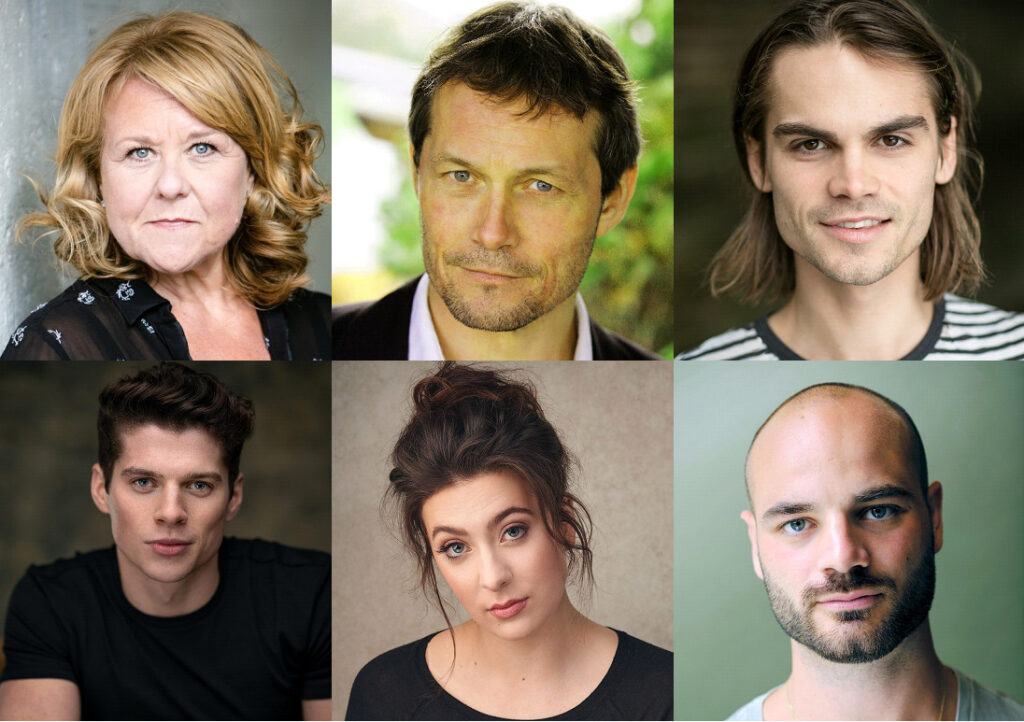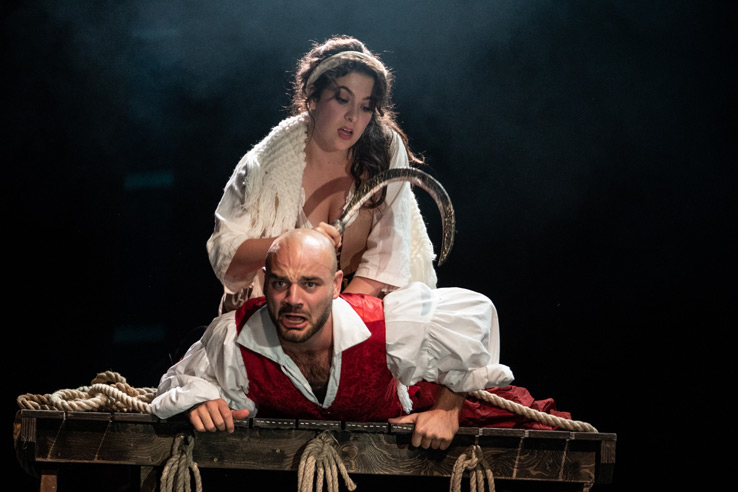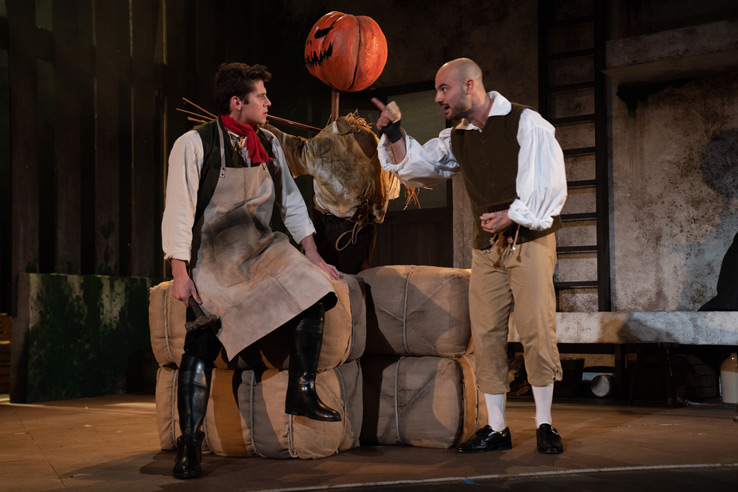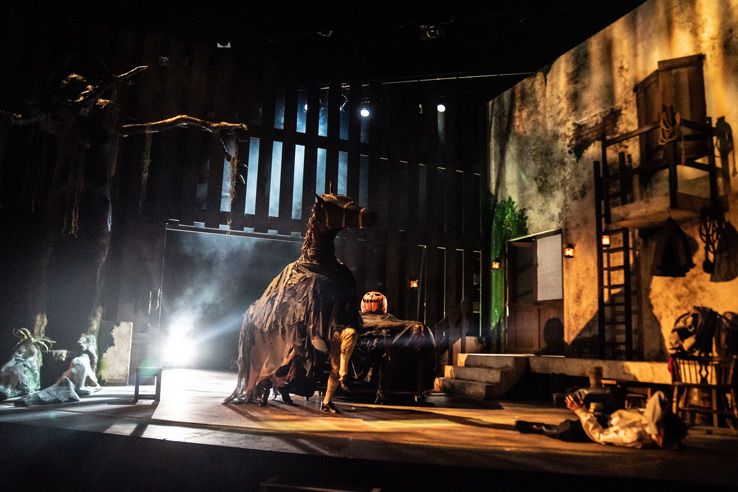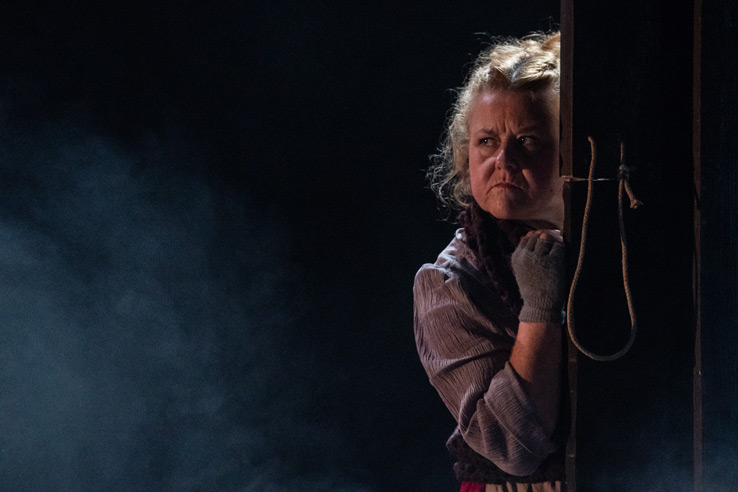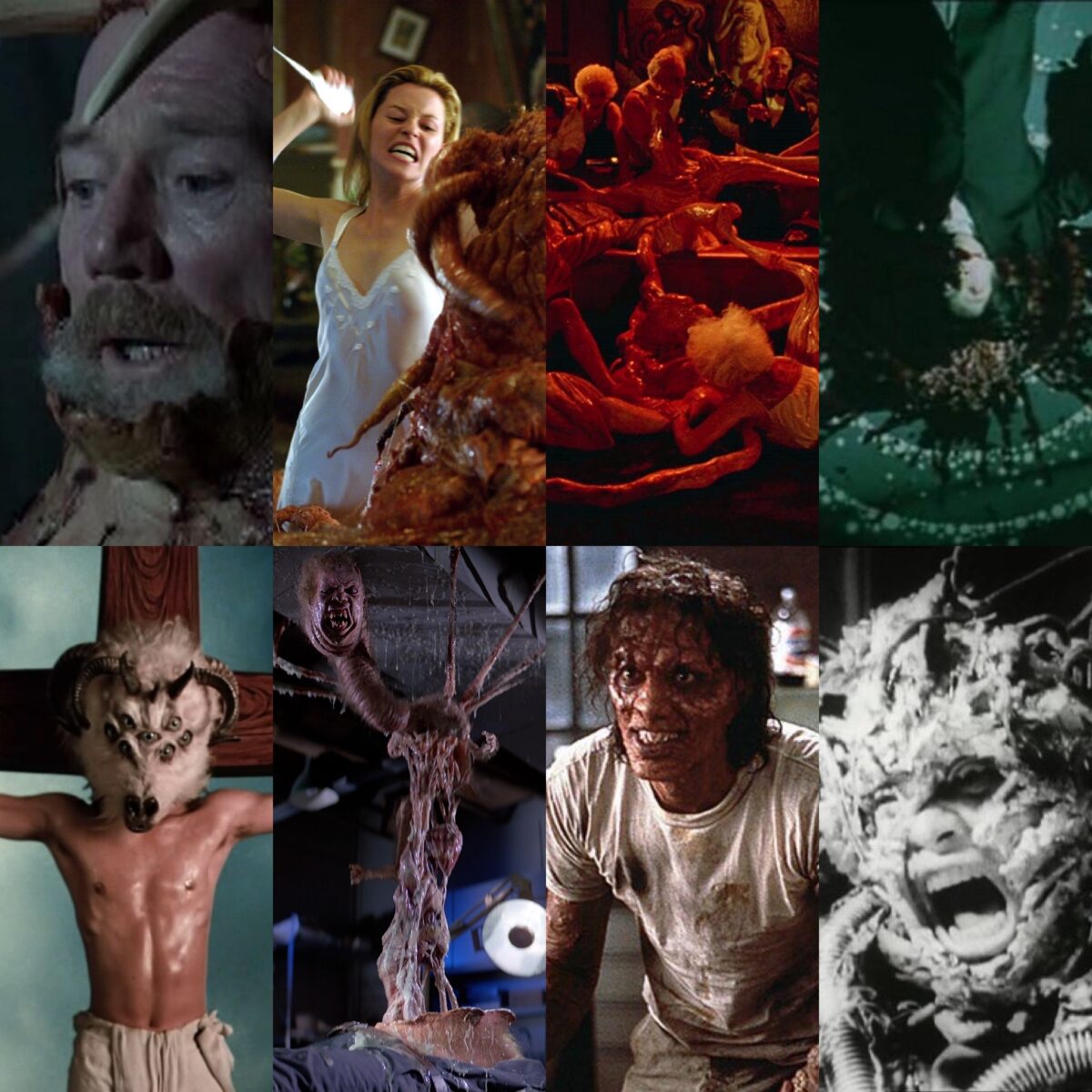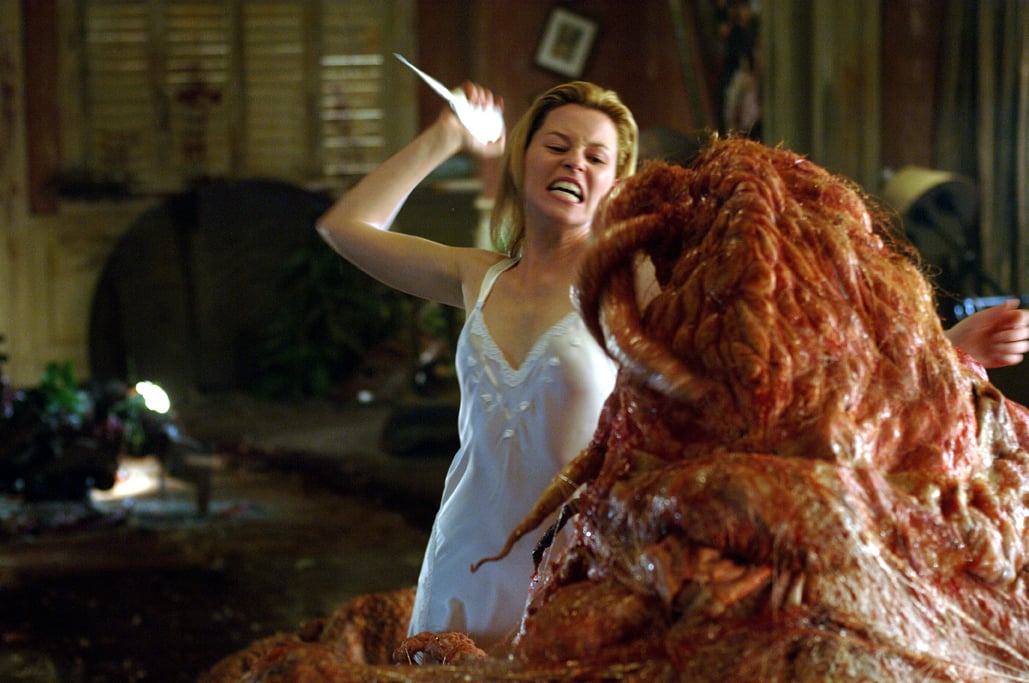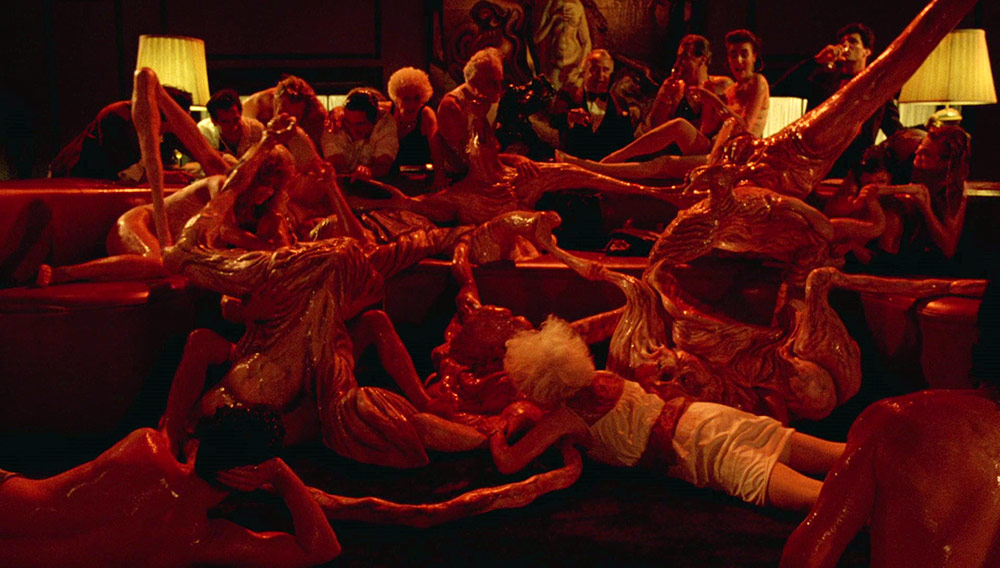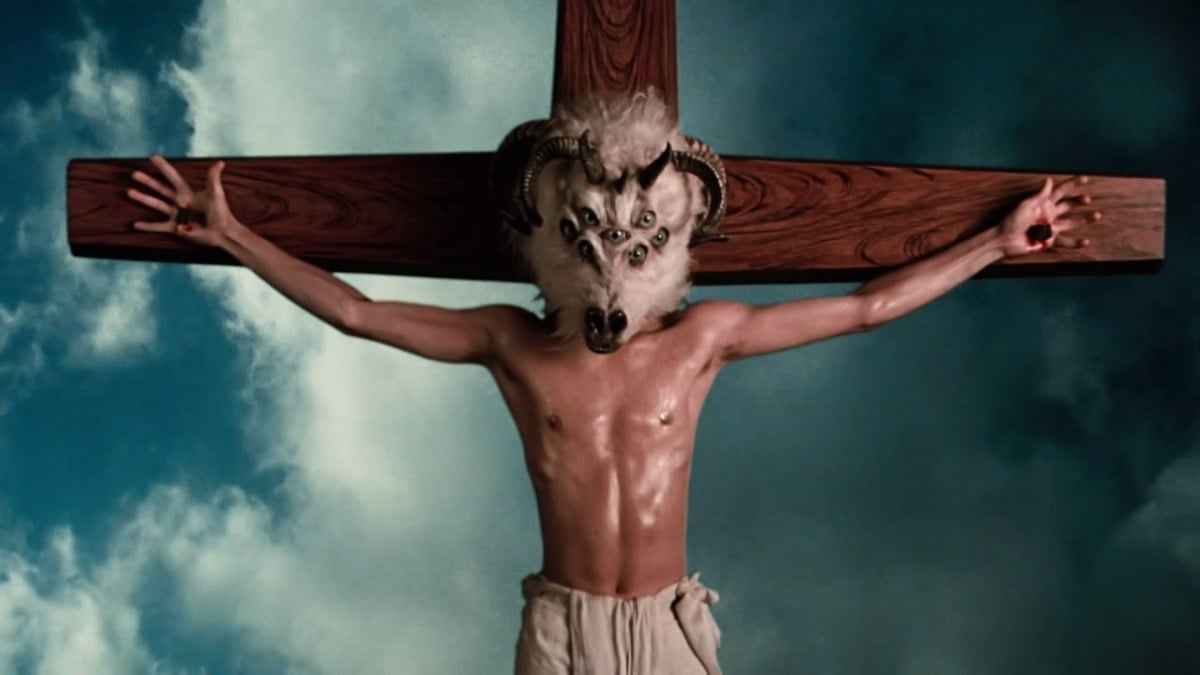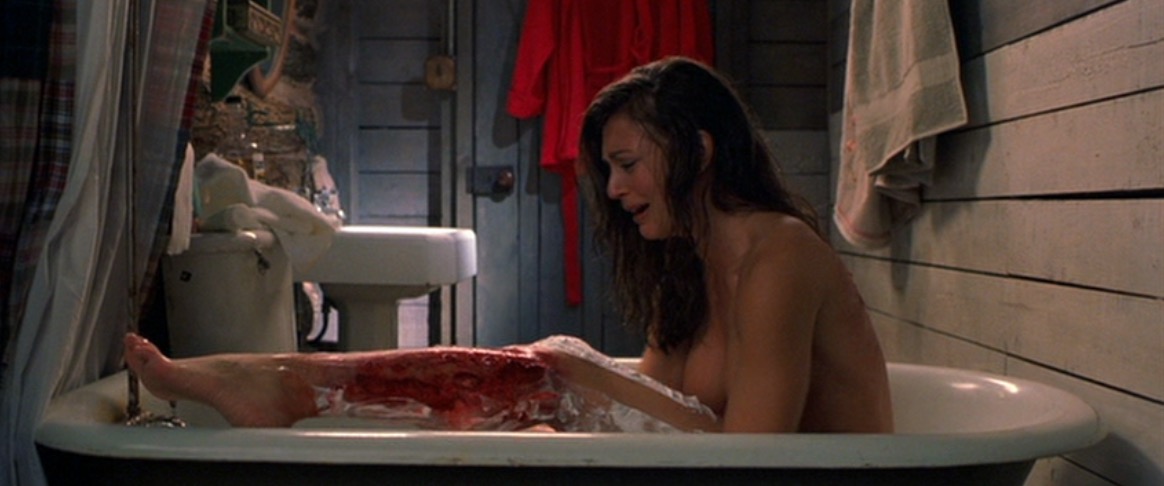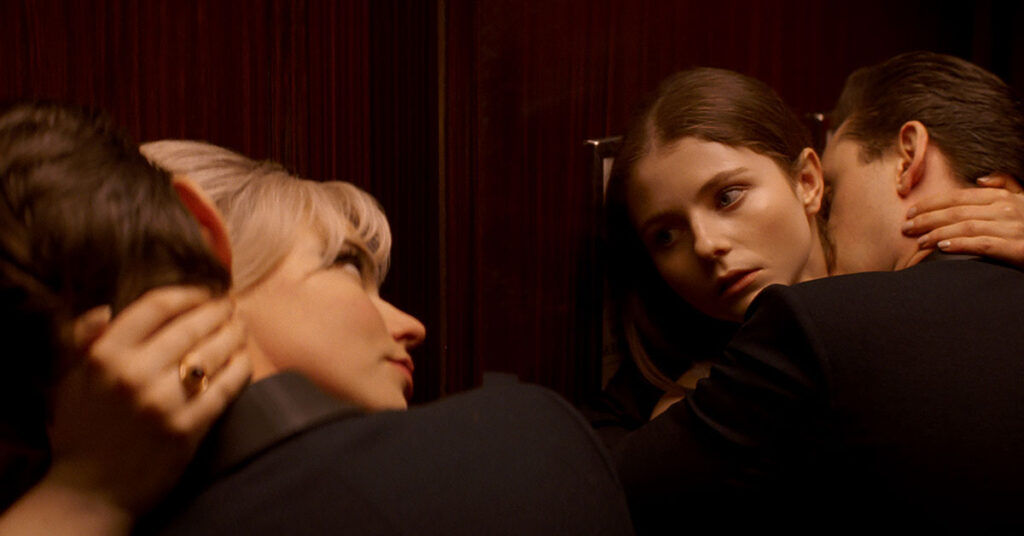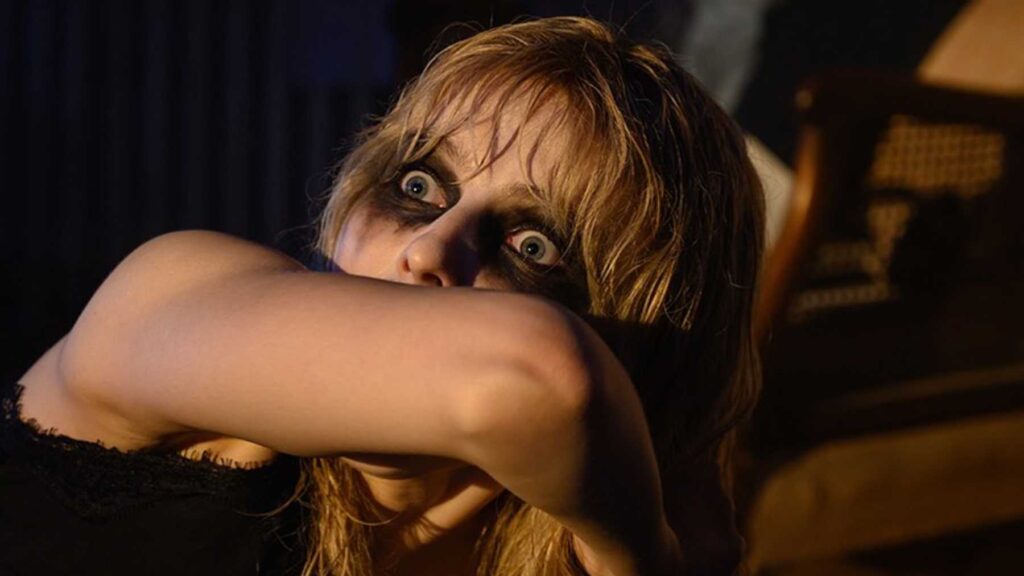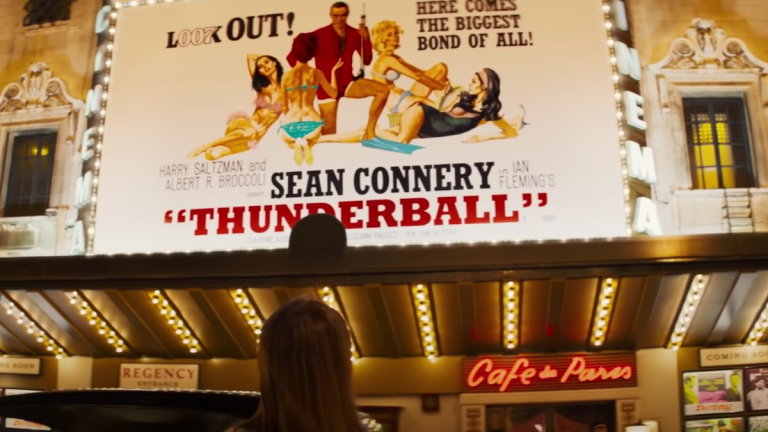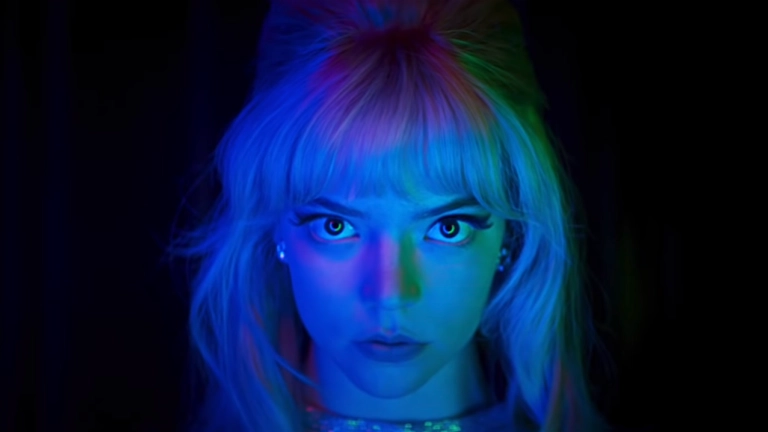
1- Spookies (Directed by Brendan Faulkner, Thomas Doran & Eugenie Joseph, 1986)
An evil warlock traps an unknowing group of teenagers in an abandoned manor in order to fulfil a sacrifice that will keep his wife alive.
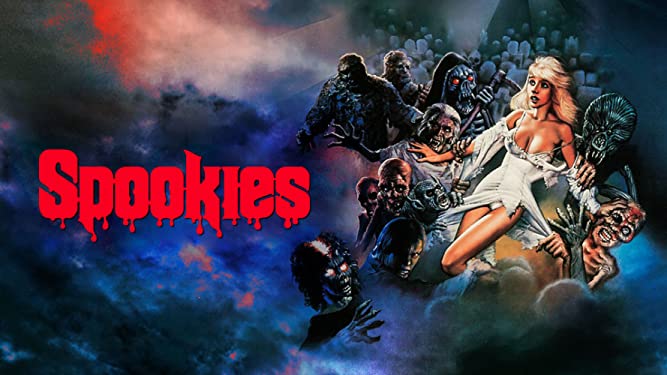
1980s horror can be so frenzied at times, creating an illogical story path that does not entirely glue together properly, but come hell or high water audiences absolutely adore this exact rambunctiousness that the decade does so well. Spookies is no exception, as this egregious flick has everything a viewer could want, from zombies and witches to ouija boards and snake demons. Across time the obscurity has been praised, with many admiring the sheer will of the film and how it manages to ram so many genre highlights into an 85-minute runtime. The offbeat energy is owed to the alternation of directors. Spookies started out as ‘Twisted Souls’, a haunted house film, but after creative disagreements, the financial backers brought in Eugiene Joseph who added in several subplots and a barrage of creatures. Despite all the mixups, it’s this amalgamation of visions and twisted monster designs that gave Spookies its cult following, earning itself a reputation for being uncanny.
2- Parents (Directed by Bob Balaban, 1989)
The Laemie’s move to a quiet Californian suburb to live out the perfect American Dream in the 1950s, but ten-year-old Michael (Bryan Madorsky) suspects that his parents are secretly cannibals.

Parents walks the fine line of being satirical without being a slapstick comedy, all thanks to the film’s dark and macabre undertones. Throughout, there is an air of uncertainty that waivers in and out, is Michael just dreaming about his parents’ hidden skeletons? Or is he genuinely living this real-life nightmare? Most of the time Balaban toys with the audience’s natural vulnerability. We can only believe what we’ve been shown, but at the same time, Michael’s father Nick (Randy Quaid) and mother Lily (Mary Beth Hurt) play their roles so subtly that we can never be sure; leaving the viewer in this surreal limbo for nearly the entire film. What makes Parents such a buried treasure is this ambiguity that can both divide opinions and naturally unsettles the film’s sense of reality.
3- Henry: Portrait of a Serial Killer (Directed by John McNaughton,1986)
Henry (Michael Rooker), is recently released from prison after murdering his own mother. Following his release, he is joined by fellow inmate Otis (Tom Towles), who becomes an accessory in Henry’s continued killings.
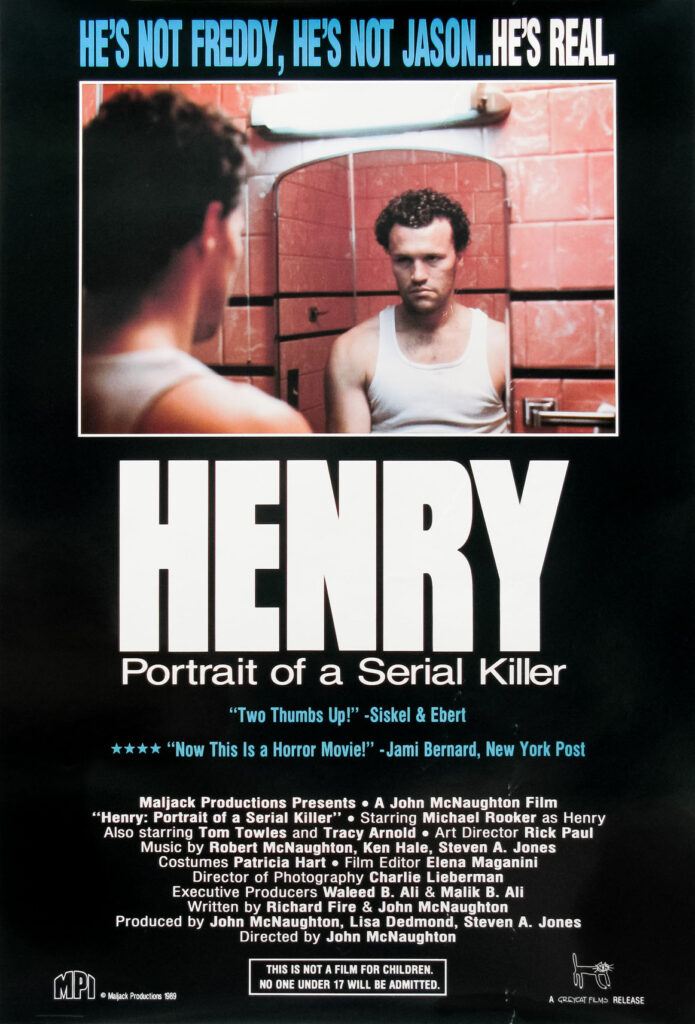
Henry: Portrait of a Serial Killer has a long complicated relationship with censorship. Not only was the film outright banned in the UK up until 1991, but the full uncut edit was not released until 2003. Similarly, the film struggled with the critical reception, with many claiming that McNaughton’s efforts added up to nothing more than torture galore. Yet, as with many great films, the controversy was only a reaction to the extremely powerful, visceral tones that the film brutally captures. At points the violence is extreme, but not to glorify, instead the callous scenes highlight the atrociousness of the true story that inspired the film. The character of Henry is based on Henry Lee Lucas, a real-life serial killer known for making false claims about cold cases. It’s quite notable that the crimes depicted on screen are mainly based on many of Lee Lucas’s fantasies. It’s for this reason that the film deserves a spotlight. McNaughton points a finger at how twisted Rooker’s character is, to truly underline his banality and to ensure that the film will always remain shocking.
4- Razorback (Directed by Russell Mulcahy, 1984)
Beth Winters (Judy Morris), an American animal rights reporter, takes a trip to Australia only to fall victim to a wild boar attack. Although her disappearance is ruled as an accident, her husband Carl (Gregory Harrison), suspects that something sinister is at play.
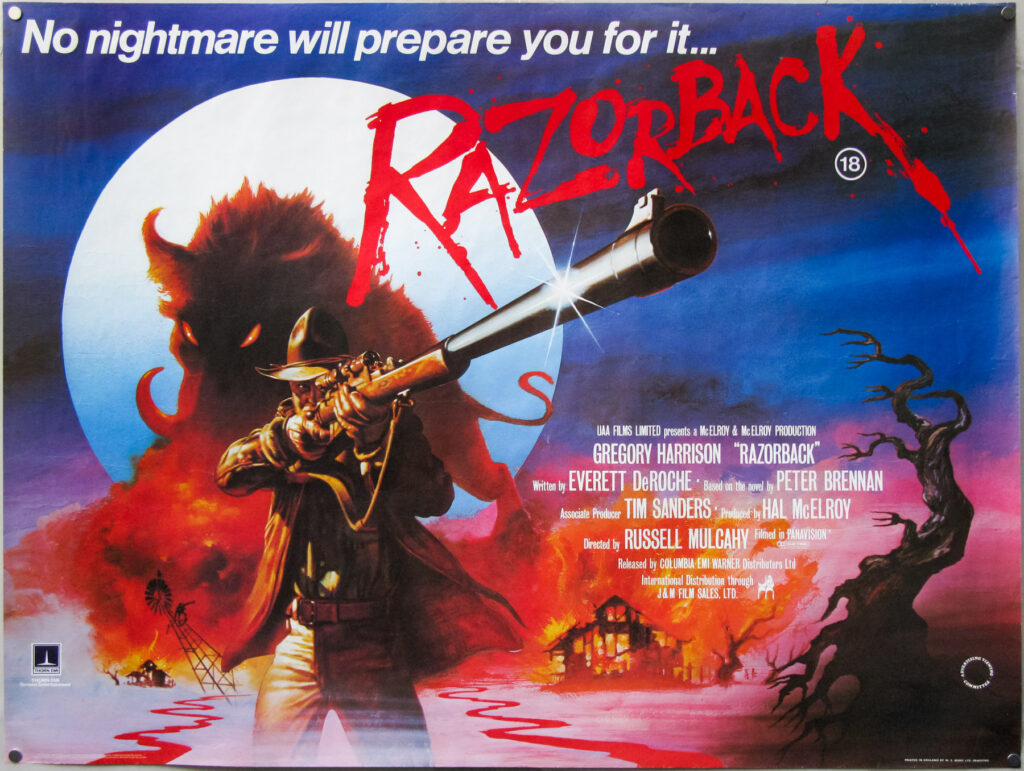
Razorback belongs to a special area of Australian cinema, eco-horror, which can be defined as a subgenre that deals with the environment and its beings, as they strike back in an act of revenge. Whilst water-creature horror had seen a rise in the 1980s (thanks to Jaws), what hadn’t been tackled as much was the natural threats that come from an environment such as the Australian outback. Razorback captures a dusty, dangerous landscape where wild pigs roam, seeking their prey. This combination of earthiness and killer beasts encapsulates the madness and visual flair that 1980s horror is known for. Prior to filmmaking, Mulcahy has been known for directing music videos, with Razorback being his first feature, but rather than the film being overly flashy, emulating a typical music video, the film remains fairly serious, tackling both themes of man vs animal, and urban panic.
5- The Vanishing (Directed by George Sluizer, 1988)
Rex (Gene Bervoets) and Saskia (Johanna Ter Steege) make a quick stop at a petrol station in France whilst on a biking holiday, but unbeknownst to anyone Saskia suddenly vanishes. Rex frantically searches for hours, only to find that no one witnessed her disappearance. Three years later Rex has a new partner but still continues his search. No leads are made, that is until he begins to receive letters from the kidnapper himself.
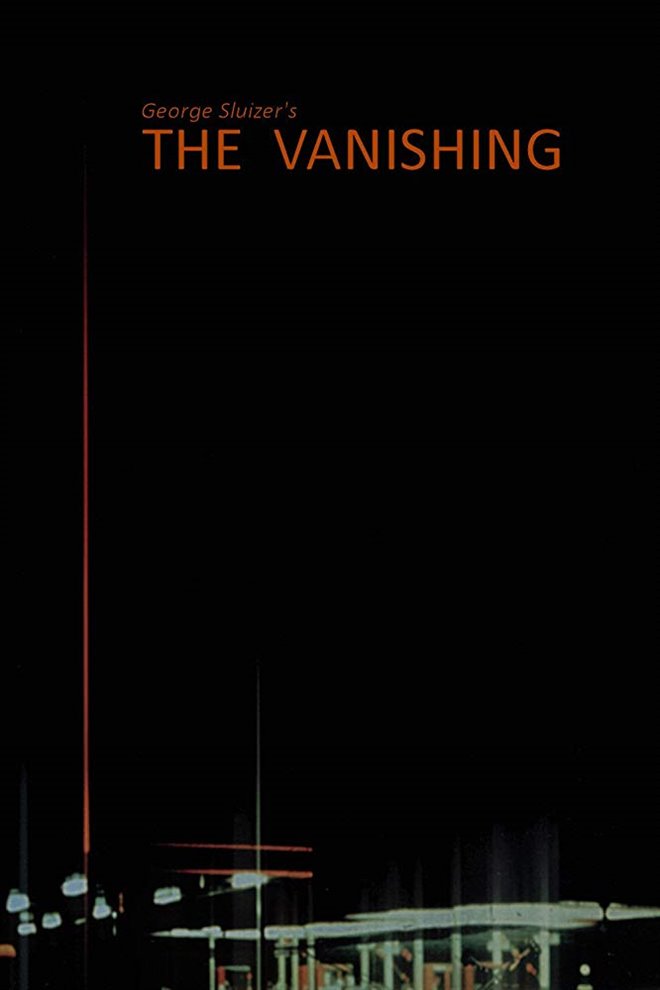
The Vanishing breaks unspeakable rules within cinema by abandoning any sense of mystery and revealing the tormentor early on. Although we are left in the dark about what exactly happened to Saskia at first, we do find out who took her almost immediately after the opening act. However, Sluizer chooses to use this plot diversion to present Raymond (Bernard-Pierre Donnadieu), Saskia’s abductor as a normal family man, who openly admits that he has no conscience, thus committing treacherous crimes to see how far he can go. Throughout the film, there is a purposeful lack of attachment. The settings are drab, the dialogue is plain and simple, and the mundanity of everyday life is not glamorized. With this, the film could very easily come across as almost bland, but it is through the mundane that the horror blooms. Cinema tends to paint a Hollywood picture of real-life terror, but in reality these things really do happen. The Vanishing mercilessly depresses in favour of depicting this true loss.
6- The Lair of the White Worm (Directed by Ken Russell, 1988)
On Eve (Catherine Oxenberg) and Mary Trent’s (Sammi Davis) farm, archeologist Angus Flint (Peter Capaldi) uncovers a large skull, which he supposes belongs to the D’Ampton Worm, a mythical reptile-like creature slain by the current Lord of the Manor’s (Hugh Grant) ancestors. When Lady Sylvia Marsh (Amanda Donohoe) takes an interest in Eve and Flint, it becomes evident that the D’Ampton Worm still lives on.
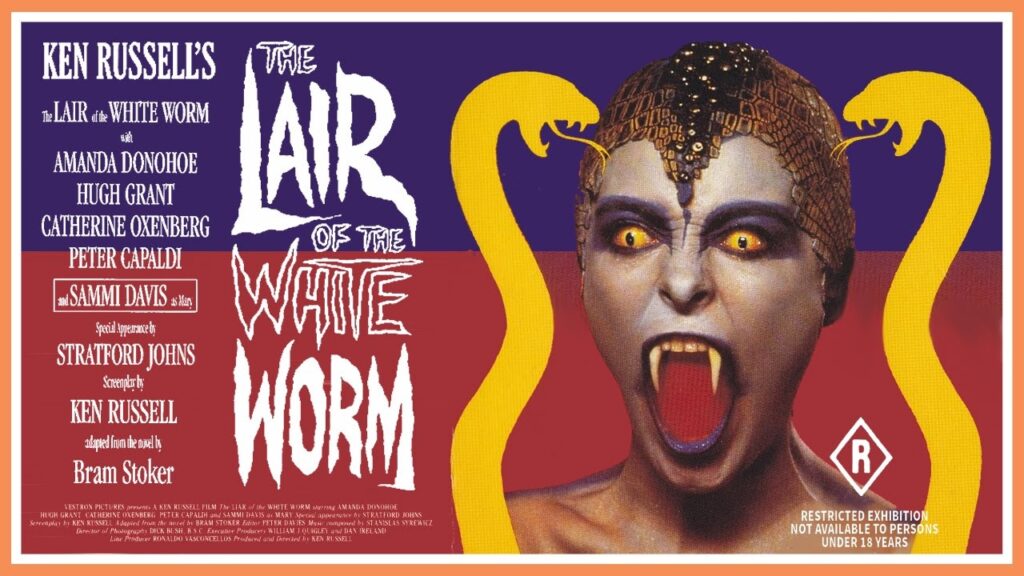
The Lair of the White Worm originates from Bram Stoker’s novel of the same name, based upon northeast English folklore surrounding The Lambton Worm. The film draws inspiration from what British horror continuously succeeds in, folk horror. Cinema such as The Blood on Satan’s Claw, Witchfinder General, and The Wicker Man all take from the country’s cultural heritage to embody the fear of ‘the other’ and the vulnerability of isolation. However, Russell refuses to directly copy what has already been done in favour of remixing what folk horror is familiar with. The Lair of the White Worm has an incomparable visual flair, with crazed imagery and plenty of colour seeping throughout the entire film.
7- The Funhouse (Directed by Tobe Hooper, 1981)
Four friends visit a traveling carnival to let loose for the night and have fun. All is going well, but when they get stuck inside ‘The Funhouse’-the park’s ghost train- they soon discover that a masked killer is killing them off one-by-one.
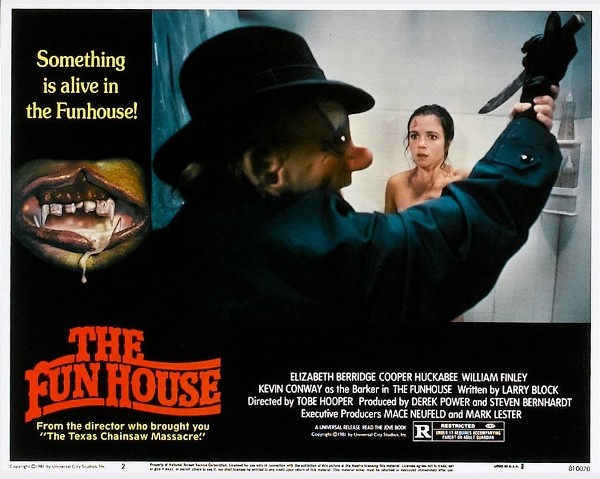
Over the years Tobe Hooper has become a horror household name with The Texas Chainsaw Massacre being just one of his many hits, but The Funhouse still remains fairly under the radar. As with many teen slashers from the early 1980s, The Funhouse was made to profit off the back of Friday the 13th’s success. Despite this, the film has an entirely unique quality that is a milieu of carnival creatures and chilling reveals that act as ghastly shock to the audience, particularly that of the killer’s facial reveal. It’s clear that the film works on multiple levels, whether its timely scares or gnarly kills- The Funhouse has it all.
8- Visiting Hours (Directed by Jean-Claude Lord, 1982)
Deborah Ballin (Lee Grant), a women’s rights activist triggers the wrath of Colt Hawker (Michael Ironside), a misogynistic serial killer after her appearance on a talk show. He partially succeeds on his killing mission, but after finding out that she survived he visits the hospital to finish the job once and for all.
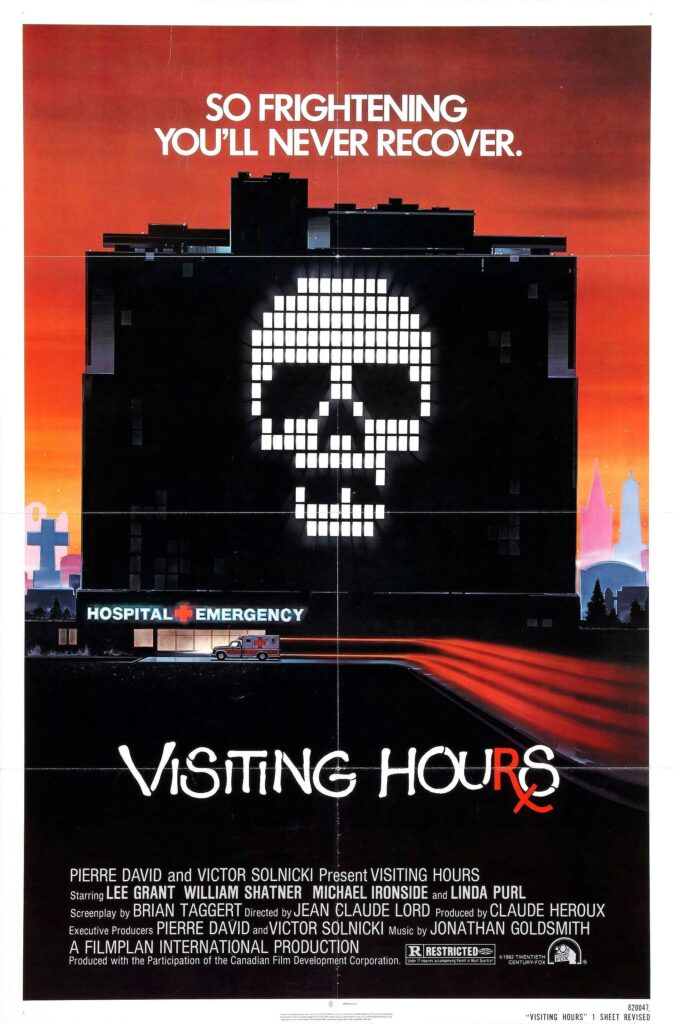
Visiting Hours is not without its issues, the release wasn’t necessarily met with applause, partially due to its positioning on the Video Nasty list, as well as major critics writing it off thanks to its ‘slasher’ nature. However, slashers have never fared well in the mainstream critical domain. Despite everything at play, Visiting Hours has a good knock at creating a rooted background story rather than just presenting a masked killer with a knife. Lord’s attempts at broadening the slasher vibe are extremely successful as Visiting Hours is a slow burn through and through. Alongside presenting a deeper motivation is the film’s performances, particularly from Michael Ironside, who plays the maniacal Colt. His portrayal of such a menacingly gruesome man is second to none, leaving the viewer on the edge of their seat the entire film.
9- Pin (Directed by Sandor Stern,1988)
Brother and sister Leon (David Hewlett), and Ursula (Cyndy Preston), form a twisted bond with their doctor father’s anatomically correct medical dummy, Pin.
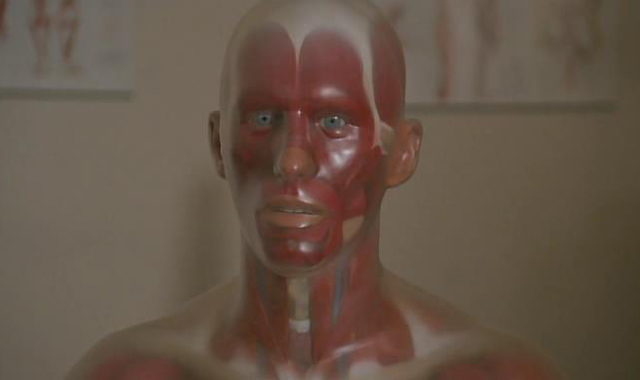
Pin is not entirely obscure. It’s not that many people do not know about its existence, it’s that the film itself deserves a lot more appraisal for its gratuitous display of disturbing horror. The entire notion of Pin is alluring, particularly for the decade. Cinema emerging from the 1980s typically fell into the slasher category, that’s not to say that slashers aren’t entirely deserving of praise, but Pin is certainly refreshing. What pushes the film out from amongst the rest is Stern’s way of subtly evoking a strong sense of eeriness through the character of the Pin. From the outset, his strange skinned-back appearance is utterly unnerving, with its blank stare accelerating any unease that we may have already had.
10- Prom Night II: Hello Mary Lou (Directed by Bruce Pittman, 1987)
Mary Lou Maloney (Lisa Schrage) is known for her unapologetic flirtatious attitude and her popular status, but her freedom is cut short when she dies during a prom night prank gone wrong. Decades later Mary Lou possesses high school student Vicki Carpenter (Wendy Lyon) in order to seek revenge.

Prom Night II surprisingly remains one of the most underrated sequels, its reputation has never managed to soar. Pittman’s take on teen horror is not only adventurous but also original in the fact that we get to see the best of both worlds- slasher mixed with supernatural elements. Coupling up with the originality is the film’s laugh-a-minute humour, and wickedly grim kills, including crucifix stabbings, burning, electrocution, and most sickeningly a kill that involves someone being crushed in between a set of lockers. Rounding the film up is the epic third act that makes Carrie’s prom seem like an absolute dream.
This weeks article comes via Grace from Film Overload, you can check out more of her work here.


